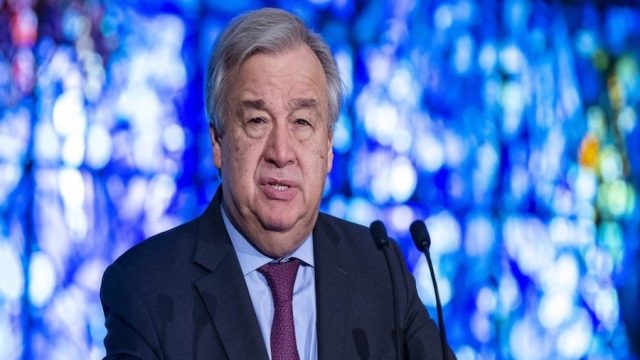UNITED NATIONS, Monday, July 15, 2025 (WNP): The world is in a “global development emergency,” with only 18% of the Sustainable Development Goals (SDGs) on track to be achieved by 2030, according to a sobering new UN report released Monday by Secretary-General António Guterres.
While the report celebrates key achievements—such as a five-year jump in global life expectancy from 2000 to 2019 and millions lifted out of extreme poverty—it also paints a grim picture of regression triggered by COVID-19, rising conflict, economic inequality, and a widening $4 trillion financing gap for developing countries.
Key findings: A tale of two realities
- Life expectancy fell back nearly two years post-COVID
- 272 million children still have no access to education
- One in 10 people lives in extreme poverty
- One in 11 suffers from food insecurity
- In 2024, one person died every 12 minutes due to conflict
- Over 1.1 billion people live in slums or informal settlements
While maternal and under-five mortality rates have dropped by 15% and 2.2 billion cases of malaria were prevented, the report warns that more than half of the 17 SDGs are moving too slowly, and 18% have reversed altogether.
“This report is more than a snapshot of today. It’s a compass pointing the way to progress,” said Guterres. “But the SDGs are slipping out of reach unless we act—urgently, together, and with unwavering resolve.”
The SDG Report 2025: A wake-up call
Released to coincide with the opening of the High-Level Political Forum on Sustainable Development (HLPF) in New York, the report marks a critical halfway point in the world’s journey toward achieving the 2030 Agenda, adopted a decade ago by all UN Member States.
The SDGs were created as a blueprint for a better world, aiming to eradicate poverty, improve health, ensure quality education, and protect the environment—through a shared commitment to equity, sustainability, and peace.
Yet, as Li Junhua, UN Under Secretary-General for Economic and Social Affairs, noted: “What we’ve learned is that sustainable development isn’t a destination—it’s a journey that demands innovation, adaptation, and a deep commitment to human dignity.”
The report highlights the failure of the global financial architecture to support SDG progress, calling for significant reforms and multilateral investments. “The SDGs cannot be achieved without reforming how we fund and manage development,” Guterres warned.
Geopolitical tensions, climate shocks, and growing debt burdens have left many developing nations unable to keep pace with the commitments of 2015.
Signs of hope and a call for action
Despite alarming setbacks, the report identifies tangible progress:
- 54 countries have eliminated at least one tropical disease
- Monitoring of SDG indicators has improved dramatically—from just 33% in 2015 to 70% today with globally accepted tracking methods
These advancements underscore that solutions exist—but they require scaled-up action and political will.
“We have the knowledge, tools, and partnerships to drive transformation,” said Li. “Now we need urgent multilateralism—a recommitment to shared responsibility and investment.”
As the HLPF begins its ten-day session, Vice President of ECOSOC Lok Bahadur Thapa called it a critical opportunity for world leaders to think outside the box and reignite momentum toward the SDGs.
“This is not a moment for despair, but for determined action,” Thapa said.
The forum aims to chart a more ambitious path forward, especially in the final five years before 2030, ensuring that no one is left behind.
Conclusion: The clock is ticking
With just five years left to fulfill the global promise of the 2030 Agenda, the UN’s message is clear: Act now—or risk losing a generation to inequality, climate chaos, and avoidable suffering.
“This report tells the SDG story in numbers,” Guterres concluded, “but above all, it is a call to action.”




